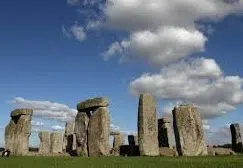The first thing we have to establish is the etymological origin of the term Neolithic. Specifically, it derives from Greek as it is the result of the sum of two lexical components of that language:
-The word “neos”, which can be translated as “new”.
-The noun «lithos», which is synonymous with «stone».
To all this we must add that it is considered that this term was coined in the 19th century. It is believed that the first person to use it was the British John Lubbock (1834 – 1913) in 1865.
Prehistory is the human period that developed before the emergence of writing . That is why it can only be known through bones, tools, remains of buildings and other elements, but not from documents of the time.
 Prehistory is usually divided into ages (time stages). The cycle that began about 2.8 million ago and lasted until approximately 3,000 BC is called the Stone Age , since it is characterized by the development of utensils and instruments with this material.
Prehistory is usually divided into ages (time stages). The cycle that began about 2.8 million ago and lasted until approximately 3,000 BC is called the Stone Age , since it is characterized by the development of utensils and instruments with this material.
After these clarifications, we can focus on the definition of Neolithic . This is the name given to the last period of the Stone Age , developed after the end of the Paleolithic . While in the Paleolithic period prehistoric humans began to carve rustic stone tools, in the Neolithic they began to resort to polishing and perfecting their creations.
It is important to know that the Neolithic is considered to be divided into three stages or phases:
-Initial Neolithic, which occurred between 6,000 BC to 3,500 BC
-Middle Neolithic, which is considered to be the most interesting and fruitful. It took place between 3,500 BC and 2,800 BC
-Final Neolithic, which marks the beginning of the so-called Age of Metals. It developed between 2,800 BC and 2,300 BC
Technical innovations, therefore, are one of the main features of the Neolithic , where changes were also introduced in the social and economic structure. During these years, agriculture and livestock farming expanded, agrarian societies emerging. In this way, man became sedentary and left nomadism aside.
Other important data from the Neolithic we can establish were the following:
-Animal domestication began to develop.
-The inhabitants of that period began to reserve part of the grain they had for future harvests, but also even to be able to market it.
-No less significant is the fact that different techniques were improved that led to the improvement not only of the ceramics that were created but also of the fabrics that were made and even the so-called pottery.
It is important to keep in mind that the Neolithic did not progress in the same way throughout the world . At a general level it can be said that, due to climate change and little by little, human beings went from hunting (subsistence economy) to agricultural and livestock tasks.
The end of the Neolithic also marked the closing of the Stone Age and the beginning of the Metal Age , which is usually divided into the Copper Age , Bronze Age and Iron Age .
